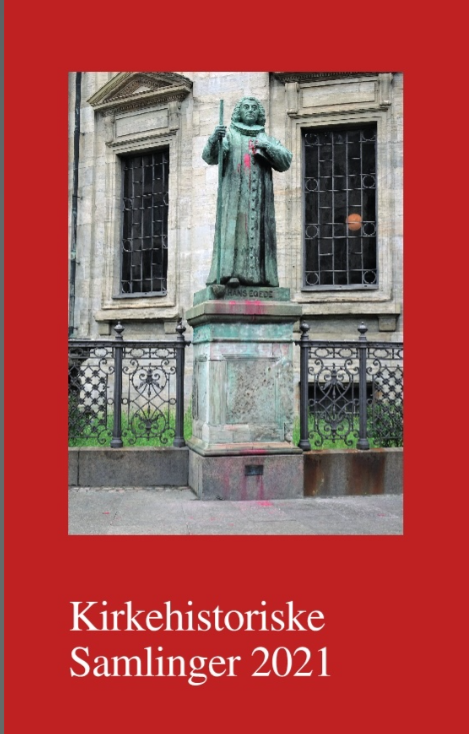Publiceret 25.02.2025
Citation/Eksport
Copyright (c) 2021 Tidsskriftet Kirkehistoriske Samlinger

Dette værk er under følgende licens Creative Commons Navngivelse – Ingen bearbejdelser (by-nd).
Resumé
Denne artikel er en undersøgelse af et konfessionelt sammenstød på vadehavsøen Nordstrand ud for Husum i det vestlige Slesvig. Sammen med øerne Pelvorm og Nordstrand Mor samt i dag forsvundne landmasser udgjorde Nordstrand øen Strand. Efter en voldsom stormflod i 1634, der delte Strand i tre, inviterede den gottorpske hertug i et i historisk forstand tidligt tilfælde af religiøs tolerance nederlandske digebyggere til det vestlige Slesvig for at inddæmme naturens kræfter. Digebyggerne, kaldet participanterne, der tilhørte den romersk-katolske kirke, kom hurtigt ikke bare i clinch med de frisiske lutheranere, men også med hinanden, fordi nogle fulgte jansenismens teologi og kirkeforståelse, mens andre lå tættere på den romerske kirkeledelses
synspunkt.
Affødt af digebyggernes tilstedeværelse på Nordstrand fandt i perioden efter 1634 og indtil 1868 en række konfessionelle sammenstød sted. Efter en introduktion til den kontekst, konflikterne på Nordstrand må forstås i lyset af, fokuserer denne artikel på ét af disse sammenstød fra tiden omkring år 1700: en uoverensstemmelse mellem på den ene side den lutherske sognepræst Otto Lorentzen Strandiger og på den anden side participanterne og den gottorpske øvrighed. Det belyste eksempel må forstås som et indlæg i en teologisk debat, der på trods af sin egen »intolerance« kun kunne finde sted i en »tolerant« kontekst.
Summary
In 1698 the Lutheran pastor in Odenbüll on the North Frisian island Nordstrand, Otto Lorentzen Strandiger, was expelled from office by
the duke of Schleswig-Holstein-Gottorf. The reason for the duke to remove the pastor, stated in a mandate from Gottorf, was his strict implementation of ecclesiastical discipline, unapproved by the duke and the synod. However, one cannot explain the duke’s action simply by a dislike of Lorentzen’s administration of the church’s discipline. Since the 1650s Nordstrand had been controlled by a Dutch company of dike engineers that had bought the island from the duke. In contrast to the duke, the clergy, and the lay people, the Dutchmen were Roman-Catholics. A contract, or Oktroy, between the duke and the new rulers, the participants, specified that they obtained the right of patronage to the Lutheran parish of Odenbüll, and it also guaranteed freedom of religion
for all inhabitants on the island. Despite the Oktroy’s granting of freedom of religion on the island, Lorentzen felt that the participants prevented his execution of the official duties and that they sought to forcibly convert people to Catholicism by obstructing Lutheran piety. Attacking the authorities at Gottorf and the participants alike, Lorentzen launched an anti-Catholic campaign from the Odenbüll pulpit.
This essay examines the Lorentzen conflict through an analysis of a manuscript, Ein Buch, darin die gerechte Sache und Klagen der Gemine und ihres Pastorn Otto Lorentzen zu Odenbüll im Nordstrande, wider die Lügen, Gottlose practiquen und Verfolgungen der Röm.-Catholischen daselbst angezeigt warden, which Lorentzen finished after his dismissal and probably intended for publication. Further, it puts the conflict into context by discussing Nordstrand’s role in the history of religious toleration in early modern Schleswig-Holstein. In 1634, a flood desolated most of the island, and while the population turned to Gottorf for help in reclaiming flooded lands and rebuilding the community, duke and court instead chose to concession the island to the Dutch participants, seeking to increase and centralize the ducal power. The fact that the participants were co-religionists of neither duke nor the islanders played no role in the duke’s policies. It did so, however, to Lorentzen. The essay concludes that the duke’s primary concern behind the dismissal of Lorentzen was the pastor’s failure to comply with the policy of toleration. If this policy was brought into question, the ducal power itself would face severe problems.
Nordstrand’s early modern history is one of more examples of religious toleration in Schleswig-Holstein prior to the Enlightenment. However, as Lorentzen’s case shows, the ideas of toleration were not necessarily shared by those who lived with them. Ironically, the »intolerance« of Lorentzen’s Lutheranism could only take place in a »tolerant« context such as that of Nordstrand.

